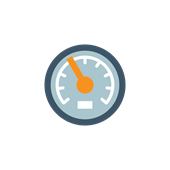An effective public transport system can be the pulse of a thriving city - it allows people to interact, work, study and play. Have you ever wondered how and when we use public transport to move around our city?
Look at the Pulse of Perth
RAC and the Planning and Transport Research Centre (PATREC) have undertaken a project to ‘visualise’ and better understand public transport travel patterns across metropolitan Perth.
The project uses aggregated and de-identifiable SmartRider data from a ‘typical week’ (avoiding public / school holidays and major events), averaged to create a ‘typical weekday’, to show how we use the public transport system to travel around our city.
How we get around
This visualisation shows the number of passengers getting on and off our public transport system – the larger the dots the busier the station / stop.
This visualisation shows public transport services moving through the system – the darker the lines the busier the service is.
Where does our public transport take us?
This interactive visualisation shows the top origin and destination pairings (that is, where more people started and ended their journey) – hover over the sections to see the number of passenger movements.
Did you know?
The number of people using public transport during the busiest hour of the day (7:20am - 8:20am) is equivalent to around 50,000 cars or 23 freeway lanes of traffic.

100,000
The number of public transport boardings made between 7:00am – 9:00am

360,000
The number of boardings made on the public transport system each day would fill the RAC Arena 24 times

Peak vs lunch
Five times as many people use public transport at 8:00am compared to midday

920 buses and 45 trains
The number of buses and trains travelling around Perth during the morning peak

3.8 million kilometres
The total distance travelled every day by passengers on our buses, trains and ferries is nearly enough to travel back-and-forth to the moon five times
18.5 minutes
How long we spend per trip, per day onboard public transport
